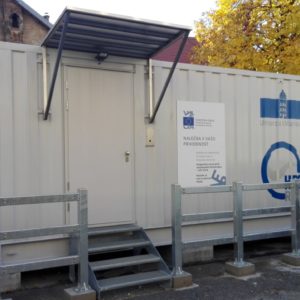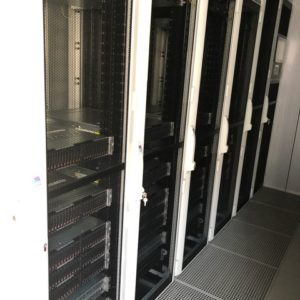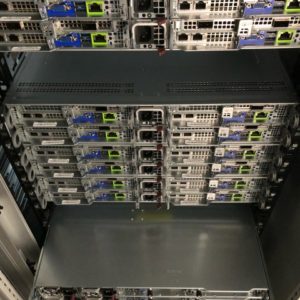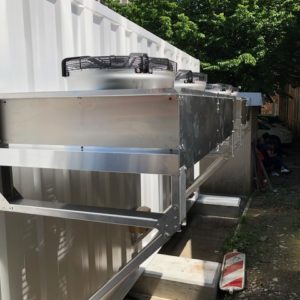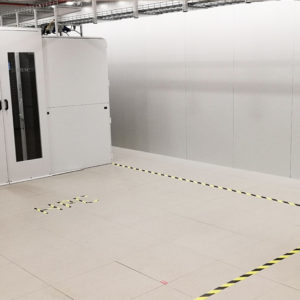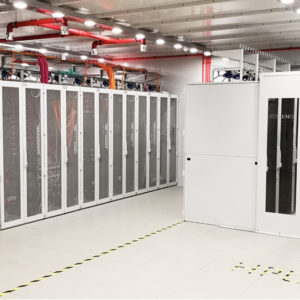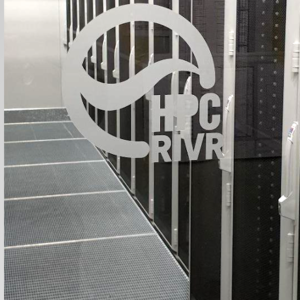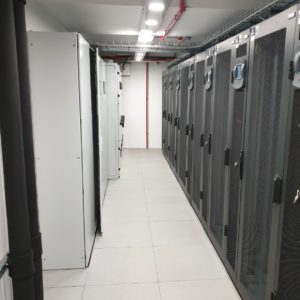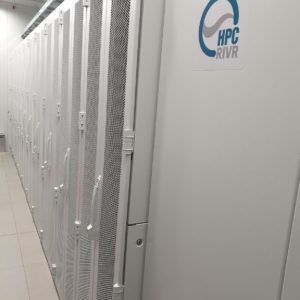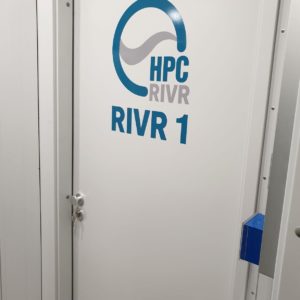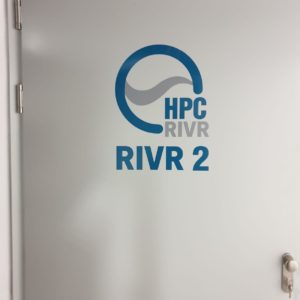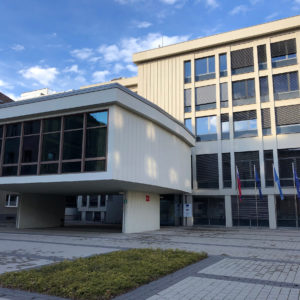System
HPC RIVR enables Slovene researchers and the industry to use state-of-the-art supercomputing technologies and thus significantly enhance the competitiveness of Slovenia on international markets and in science.
The aim of HPC RIVR is opening up new research fields and developing new services in segments that contribute significantly to global trends in research and development. Computing capacities are available for research and development work as well as educational activities according to the open research infrastructure principle. Through this, we develop knowledge, material and human resources in the field of HPC as well as increase work opportunities of research organisations..
An architecture od its own
Inspired by large supercomputing centres, such as Brookhaven National Laboratory, NERSC in Berkeley, MareNastrum in Barcelona, SuperMUC in Munich, Rutherford National Laboratory, University of Oslo and CERN, we have designed our own HPC RIVR centre architecture. The group of experts comprises of dr. Miran Ulbin (Faculty of Mechanical Engineering, Universityof Maribor), Dejan Valh (IZUM), dr. Andrej Filipčič (Jožef Stefan Institute, University of Nova Gorica), dr. Jan Jona Javoršek (Jožef Stefan Institute) and Avgust Jauk (Arnes).
Open source systemsoftware
The HPC RIVR software is designed on modern and proven technologies that are being used in newer supercomputing centres around the world as well as in centres for processing and transferring large amounts of data created in massive simulations or captured with scientific instruments.
Open access
The HPC RIVR hardware is designed on ten years’ experience gained by establishingprevious Slovene computing centres and by participating in numerous modern international supercomputing centres with long lasting cooperation of Slovene researchers and engineers as part of large international projects and organisations such as EGEE-I,II and III, EGI, WLCG, PRACE, Nordugrid, GEANT, experiments ATLAS in CERN, Belle and Belle-II in Japan, CTA, EUDAT, etc.
Knowledge and experience
Open access to HPC RIVR infrastructure is based on the outlines of the European Charter for Access to Research Infrastructures, stating three modes of access, namely excellence-driven, market-driven and wide access. In collaboration with the SLING consortium, the operational group for open access lays down criteria and procedures for obtaining access as well as the priorities of using HPC RIVR resources
Broader concept
HPC RIVR is designed as a general dedicated centre covering the needs of various research groups and projects. Unlike the classic HPC centres, which were primarily intended for intensive computing, HPC RIVR also enables the processing of a large amount of data and rapid exchange with other computing centres as well as computing on modern GPUs.

HPC RIVR @ UM (working name MAISTER)
The computing capacity is up to 244 TeraFLOPS (122 TeraFLOPS per million inhabitants).
76 dual-processor compute nodes with a total of 4.864 cores.
6 dual-processor compute nodes, each with 4 additional graphics processing units with a total of 122.952 cores (72 CPU cores, 122.880 CUDA/GPU cores).
In total 40 TB of system memory and 158 TB of fast storage space.
Additional fast disk array with a capacity of 138 TB.
All nodes and disk systems are connected to the fast local Ethernet and Infiniband network with low latency with a speed of at least two times 100 GB/s.
The system is connected to the ARNES and GEANT network with a speed of several 10 GB/s. From2020 onwards of several 100 GB/s.
Launch of the prototype HPC RIVR supercomputer at the University of Maribor: 27 November 2019.
HPC RIVR @ IZUM (working name VEGA)
The planned computing capacity is 10 PetaFLOPS (5 PetaFLOPS per million inhabitants).
Dual-processor compute nodes with more than 100,000 processor cores.
Dual-processor compute nodes with additional graphics processing units with more than 600,000 cores.
Disk array with at least 4 PB of fast and at least 30 PB of permanent storage space.
All nodes and disk systems will be connected to the fast local Ethernet and low latency Infiniband network with a speed of at least two times 100 GB/s.
The system will be connected to the ARNES and GEANT network with a speed of several 100 GB/s.
The launch of the primary HPC RIVR supercomputer at the Institute of Information Science, Maribor is planned at the end of 2020.
HPC RIVR @ FIŠ (working name TRDINA)
Dual-processor compute node with increased system memory.
Dual-processor compute node with 4 additional graphics processing units with a total of 14,348 cores.
Additional fast disk array with a capacity of 138 TB.
All nodes and disk systems are connected to the fast local Ethernet network with a speed of at least 100 GB/s.
The system is connected to the ARNES and GEANT network with a speed of several 10 GB/s.
From 2020 onwards of several 100 GB/s.
GigaFLOPS
The computing system with 1 gigaFLOPS (GFLOPS) can carry out (109) operations with a floating point per second. To equal what the 1 GFLOPS computing system can do in only one second one should make a calculation every second for 31.69 years.
TeraFLOPS
The computing system with 1 teraFLOPS (TFLOPS) can carry out (1012) operations with a floating point per second. The 1 TFLOPS rate equals 1,000 GFLOPS. To equal what the 1 TFLOPS computing system can do in only one second one should make a calculation every second for 31,688.77 years.
PetaFLOPS
The computing system with 1 petaFLOPS (PFLOPS) can carry out (1015) operations with a floating point per second. The 1 PFLOPS rate equals 1,000 TFLOPS. To equal what the 1 PFLOPS computing system can do in only one second one should make a calculation every second in 31,688,765 years.
ExaFLOPS
The computing system with 1 exaFLOPS (EFLOPS) can carry out (1018) operations with a floating point per second. The 1 EFLOPS rate equals 1.000 PFLOPS. To equal what the 1 EFLOPS computing system can do in only one second one should make a calculation every second in 31,688,765,000 years.




